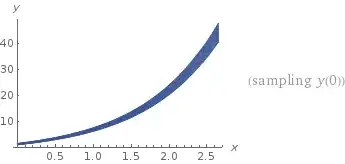Problem
I need to solve differential equation which is defined as:
$$ y'=2+y,\quad y(0)=2 $$
Attempt to solve
Now we could write the equation in form of:
$$ \frac{dy(x)}{dx}=y(x)+2$$ Divide by $y(x)+2$ $$ \frac{\frac{dy(x)}{dx}}{y(x)+2}=1 $$ Now integral both sides $$ \int{\frac{\frac{dy(x)}{dx}}{y(x)+2}}dx = \int{1} dx $$ Now here is the part i don't understand. This should equal the following: $$ \int{\frac{1}{y+2}}dy=\int{1}dx $$ Solving left side with u-substitution shouldn't be problematic but the problem is i don't have good understanding what's going on here ? How do you get
$$ \int{\frac{\frac{dy(x)}{dx}}{y(x)+2}}dx=\int{\frac{1}{y+2}}dy $$
Another thing i don't understand is the notation used in the problem. there is $y(0)=2$ what i am suppose to do with this information ?
The solution set for this equation is:
But again i don't think i can fully understand this.
If someone could provide some explanation whats going on here that would be highly appreciated.
